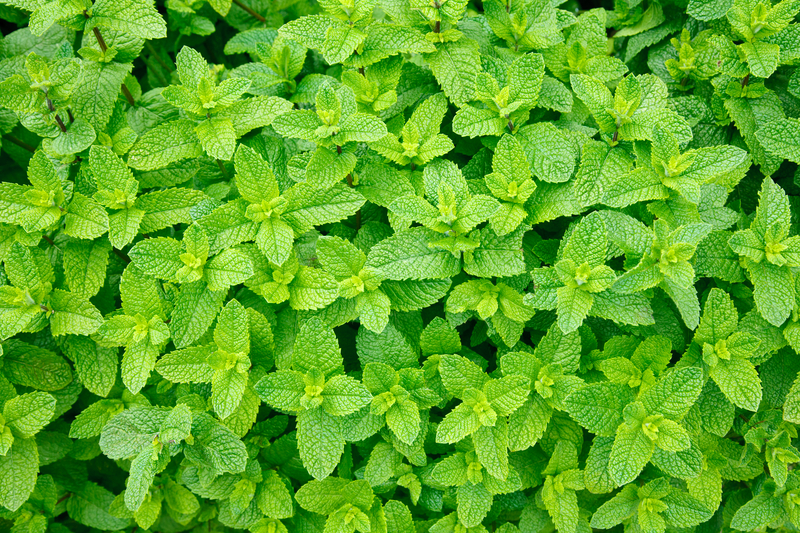The Vigorous Growth of Mint: Managing Its Spread in Your Garden
Mint is a popular herb known for its refreshing flavor and aromatic leaves, making it a favorite among gardeners and cooks alike. However, mint is also notorious for its aggressive growth, which can quickly take over garden spaces if not properly managed. Understanding how to contain mint is crucial for maintaining a well-ordered garden.
Why You Should Be Cautious When Planting Mint
Mint plants are incredibly hardy and can thrive in various conditions, which, while beneficial, also makes them invasive. Their root system, particularly the runners, can spread rapidly beneath the soil surface, sprouting new plants far from the original. If left unchecked, mint can overshadow other plants, competing for essential nutrients, water, and light.
Strategies for Containing Mint in Your Garden
- Use Containers: The simplest and most effective way to control mint is by planting it in containers. This method prevents the roots from spreading uncontrollably. You can use standard pots or garden planters, ensuring they have adequate drainage. Place these containers in your garden beds or on patios where the mint can bask in ample sunlight.
- Sunken Pots: For gardeners who prefer mint directly in the ground, consider planting it in a pot and then burying the pot in your garden bed. This method helps contain the roots while giving the appearance of mint growing naturally in your garden. Ensure the rim of the pot stands several inches above the soil to prevent runners from escaping over the top.
- Regular Pruning: Vigilant pruning helps control mint’s spread and encourages fuller, bushier plants. Trim back the overground parts regularly, especially before they flower, as mint can seed itself and spread that way too.
- Choose an Appropriate Spot: If you plant mint in the ground without containment, choose an area where its aggressive nature will cause fewer issues. For example, mint can be useful in areas where little else will grow or as a ground cover to reduce soil erosion.
- Barrier Methods: Installing root barriers in the ground can help limit the horizontal spread of mint’s roots. These barriers, made from plastic or metal, should be buried around the mint planting area to a depth of at least 12 inches.
Additional Tips for Planting Mint
- Soil and Watering: Mint prefers moist, well-drained soil. It’s tolerant of various soil types but thrives in slightly acidic to neutral pH levels. While mint likes consistent moisture, avoid waterlogged soil to prevent root rot.
- Sunlight: Mint performs best in full to partial sunlight. If you’re growing mint indoors, place it near a window that receives ample light.
- Harvesting: Regular harvesting of mint leaves can help control its growth while providing fresh herbs for culinary use. Pinch off the tips to encourage bushier growth.
By following these tips, you can enjoy the benefits of growing mint without letting it overrun your garden. Whether contained in pots, controlled through pruning, or used as a strategic ground cover, mint can be a delightful addition to your gardening endeavors when managed correctly.
- High heat, rain and humidity bring challenges for New Jersey gardenersTRENTON — New Jersey’s mid-summer weather pattern of sweltering temperatures, soaking rains, and thick humidity is testing the resilience of home gardens across the state. While these conditions can benefit…
- In New Jersey, Bats Are Eating the Spotted Lantern FliesNEW BRUNSWICK, N.J. — Bats are now being recognized as unexpected allies in the fight against spotted lanternflies, a major threat to New Jersey’s agriculture, according to new research from…
- The hummingbirds are back in New Jersey—here’s how to welcome them safelyEach spring, like clockwork, ruby-throated hummingbirds return to New Jersey after a long migration from Central America. Their arrival is a joyful sign that warmer days are here, and for…
- May Gardening in New Jersey What to Plant and How to Prepare NowAs May begins, it’s go-time for gardeners in New Jersey’s Zone 7. With the last frost typically behind us, the soil is warming and days are getting longer—perfect conditions to…
- Newark’s cherry blossoms are in their prime, but the countdown is on before the petals vanishNEWARK, NJ — More than 5,300 cherry blossom trees are in full bloom at Branch Brook Park, drawing thousands of visitors as the Essex County Cherry Blossom Festival enters its…
